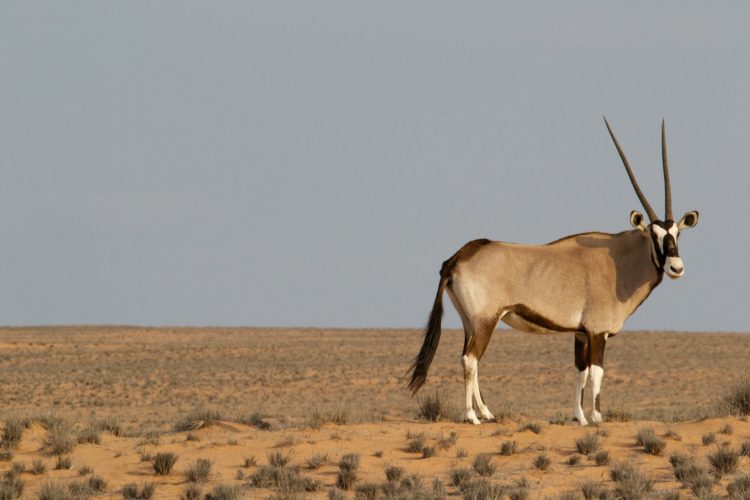Hope for biodiversity

The apparent global decline in vertebrate populations (from birds and fish to antelope) is actually driven by extreme losses in a few populations, according to new research involving the University of St Andrews.
An international research team led by McGill University in Canada, including the University of St Andrews, the University of Maine and the Zoological Society of London, in an article published in Nature, found that the picture of dramatically declining vertebrate populations of all kinds is driven by a small number of outlier populations whose numbers are dropping at extreme rates.
Once these outliers are separated from the mix, a very different and far more hopeful picture of global biodiversity emerges. Populations are groups of individuals of the same species living in a particular area, and therefore decreases in population size often precede loss of species.
Dr Maria Dornelas, of the Centre for Biological Diversity in the School of Biology at the University of St Andrews, said: “Our results show that rather than having biodiversity loss everywhere, declines are more concentrated than we thought.
“Knowing where we have populations shrinking or growing allows us to prioritise where to focus conservation effort.”
Previous studies used geometric means to calculate average population declines of vertebrates. However, the new research showed that geometric means are extremely sensitive to a small number of extreme trends and therefore presented a new approach which highlights these extreme trends when they occur but does not lead to the erroneous belief that they are widespread.
Previously, it had been estimated that vertebrate populations had declined on average by more than 50 per cent since 1970, based on historical wildlife monitoring data.
Professor Brian Leung, a McGill ecologist, the UNESCO Chair in Dialogues for Sustainability and the senior author on the study, said: “However, given previous mathematical methods used to model vertebrate populations, this estimate could arise from two very different scenarios: widespread systematic declines, or a few extreme declines.”
In this paper the researchers approached the question differently.
Using a dataset of more than 14,000 vertebrate populations from around the globe collated in the Living Planet Database, the researchers identified about one per cent of vertebrate populations which have suffered extreme population declines since 1970 (such as reptiles in tropical areas of North, Central and South America, and birds in the Indo-Pacific region).
When this extreme one per cent was accounted for, the researchers found the remaining vertebrate populations were neither generally increasing nor decreasing when grouped all together.
Professor Leung added: “The variation in this global aggregate is also important. Some populations really are in trouble and regions such as the Indo-Pacific are showing widespread systematic declines. However, the image of a global ‘biodiversity desert’ is not supported by the evidence.
“This is good, as it would be very discouraging if all of our conservation efforts over the last five decades had little effect.”
Co-author Professor Anna Hargreaves, a Professor in the Biology Department at McGill, added: “We were surprised by how strong the effect of these extreme populations was in driving the previous estimate of average global decline.
“Our results identify regions that need urgent action to ameliorate widespread biodiversity declines, but also reason to hope that our actions can make a difference.”
The research was funded by the Natural Sciences and Engineering Research Council of Canada (NSERC).
The paper, ‘Clustered versus catastrophic global vertebrate declines’ by Leung B, Hargreaves AL, Greenberg DA, McGill B, Dornelas M and Freeman R is published in Nature and available online.
Please ensure that the paper’s DOI [doi.org/10.1038/s41586-020-2920-6] is included in all online stories and social media posts and that Nature is credited as the source.
Issued by the University of St Andrews Communications Office.